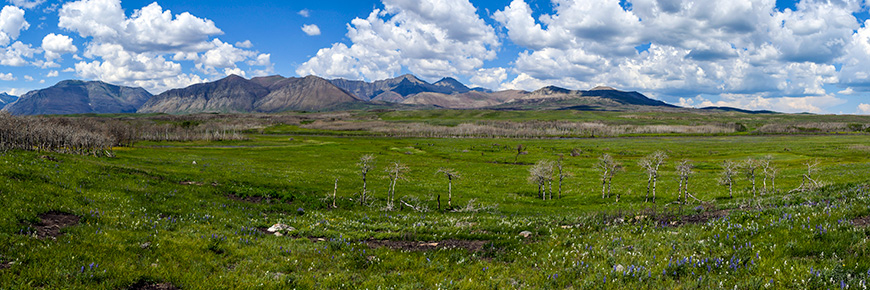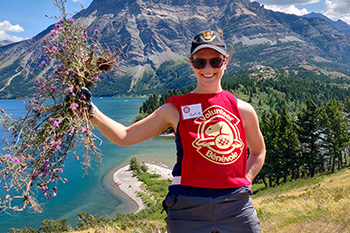
Restoring disturbed sites
Waterton Lakes National Park
Restoration in the foothills parkland
Waterton Lakes is the only national park in Canada protecting the foothills parkland ecoregion. Grassland ecosystems are among the most threatened in the world. Alberta's foothills fescue and foothills parkland grassland ecosystems have declined due to cultivation, development and invasive species. Between 16 and 35 per cent of Alberta’s natural grasslands remain. It is important to conserve and restore this important habitat.
Managing disturbed sites
There are several projects underway in Waterton Lakes to revegetate disturbed locations with native plants, including decommissioned gravel pits and recent disturbances from construction projects. When it comes to these construction projects, Parks Canada’s impact assessment and resource conservation teams work closely together to help minimize disturbances to Waterton Lakes’ natural landscape. Much of this important work takes place prior to construction. Teams develop strategies to disturb the landscape as little as possible. When the impacts of disturbances are unavoidable, Parks Canada makes plans for landscape restoration ahead of time.
Parks Canada uses several strategies to help maintain a healthy grassland ecosystem. Revegetation, prescribed fire and non-native plant control are all important, and often all strategies are used together.

Restoration in Waterton Lakes
Parks Canada is currently restoring over six hectares of foothills parkland in Waterton Lakes National Park. One of the first steps towards rebuilding a healthy grassland is collecting seeds from native plant species. This is done by both Parks Canada staff and volunteers. Seeds are either sown directly into the ground, or grown into plugs for later planting. Around 20,000 native grass and flowering plant (forb) plugs from 51 species have been planted at restoration sites around the park in the past eight years. Restoration projects also include managing invasive plant species.
Recent projects
- Treating patches of smooth brome, an invasive grass, with a combination of prescribed fire and herbicide, then reseeding;
- Filling and covering an eroded slope with biodegradable hemp matting and topsoil, then planting and seeding to help prevent the return of invasive species;
- Planting and seeding old gravel pits that have slow natural regeneration;
- Hydro-seeding (spreading a seed/mulch slurry to grow grass and prevent soil erosion) when construction projects are complete;
- Transplanting existing native plants from planned construction areas.
Planting and seeding are only part of the restoration story. Before and after restoration work on a site takes place, biologists monitor its condition to evaluate the effectiveness of different restoration techniques. Monitoring alerts us if there are issues that might affect a restoration project’s success, such as the arrival of an invasive species.
Parks Canada values collaborating with community partners. Restoring ecosystems can be very complicated work. By sharing knowledge and learning from our neighbours, we can achieve better results. We are working together to improve the availability of locally-adapted native seeds, and supporting other grassland restoration projects beyond park boundaries.
- Date modified :